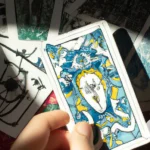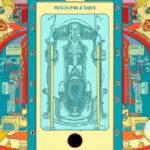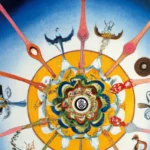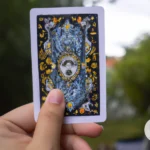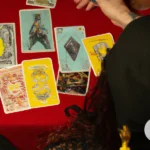As we journey through life, we often find ourselves facing inner conflicts and struggles that seem to confound us. These internal battles can be difficult to understand, let alone resolve. Yet, Swiss psychiatrist Carl Jung proposed a way to navigate this complex process of self-discovery through the concept of Shadow Work. Meanwhile, Tarot Cards have been around since the 15th century, and are often associated with divination and fortune-telling. However, despite their mystical reputation, tarot cards are also a powerful tool for Jungian Shadow Work. By exploring the connections between these ancient cards and the process of exploring our shadow selves, we can unlock the potential for profound personal growth and transformation. In this article, we will delve into the fascinating relationship between Tarot Cards and Jungian Shadow Work, and explore how we can use them for our own personal development.
Understanding Jungian Shadow Work
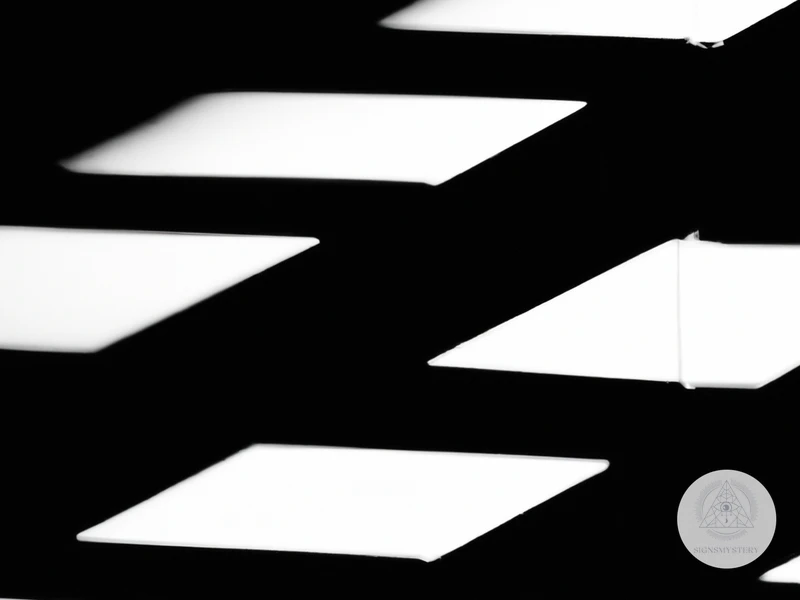
Understanding the depths of our psyche and confronting our innermost fears and desires can be a daunting task. However, the process of shadow work, based on Carl Jung’s theory of the shadow, can offer great rewards in terms of personal growth and self-discovery. To dive into the world of shadow work is to explore the parts of ourselves that have been repressed or denied, and to forge a closer relationship with our subconscious mind. In this section, we will take a closer look at what Jungian shadow work is, why it is important, and how it can be integrated with the use of tarot cards. To further explore the connection between tarot cards and shadow work, check out our article on the Major Arcana and its relationship to the self.
What is Jungian Shadow Work?
Jungian Shadow Work is a therapeutic process that helps individuals to understand and integrate their shadow, which is the unconscious or repressed part of the psyche. According to Carl Jung, the shadow consists of all the aspects of personality that the conscious mind does not recognize, accept or acknowledge. These can include traits or emotions that are deemed as negative or unacceptable such as anger, jealousy, or greed.
The goal of Jungian Shadow Work is to bring these hidden aspects of the psyche into the conscious mind, so that they can be integrated, and individuals can better understand themselves as a whole. By exploring our shadow, we can identify patterns and behaviors that no longer serve us and work towards personal growth and transformation.
Shadow Work and Tarot Cards
The use of Tarot Cards can be a powerful tool to aid in the process of Jungian Shadow Work. Tarot Cards are a visual representation of universal and archetypal themes that can serve as a mirror to reflect on our inner selves.
Tarot Cards provide a way to access the subconscious mind and bring forth hidden patterns and beliefs. They can help us to uncover and explore the shadow aspects of our personality that we may not be aware of. Through Tarot Card readings, an individual can begin to connect with their inner self and understand their deepest desires, fears, and motivations.
Incorporating Tarot Cards into a Shadow Work practice provides a unique and intuitive approach to self-exploration and personal growth. In the following sections of the article, we will explore the different types of Tarot Cards and their relationship to the self and personal development.
To learn more about how Tarot Cards can uncover subconscious beliefs, click on Tarot Cards to Uncover Subconscious Beliefs.
Why is Jungian Shadow Work Important?
Individuals who seek personal growth and self-awareness often turn to Jungian shadow work as a valuable tool. Shadow work refers to the process of exploring one’s unconscious mind and hidden emotions, including the aspects of oneself that are often repressed or denied. This can be a challenging process, as it requires confronting and accepting one’s inner demons and dark side. However, the benefits of shadow work can be profound and life-changing.
Here are some reasons why Jungian shadow work is important:
- Increased self-awareness: By acknowledging and becoming aware of one’s shadow self, individuals can gain deeper insight into their inner strengths and weaknesses. This awareness can help individuals make more conscious choices in their lives, rather than being driven by unconscious patterns and impulses.
- Improved relationships: Shadow work can help individuals recognize and address negative patterns and projections in their relationships with others. By accepting and integrating the shadow self, individuals can cultivate greater empathy and understanding in their interactions with others.
- Healing and personal growth: Shadow work can be instrumental in healing past traumas and emotional wounds. By confronting and processing these difficult emotions, individuals can release pent-up energy and experience personal transformation.
- Integration of the whole self: Shadow work encourages individuals to embrace their whole selves, including the parts of themselves they may be ashamed of or afraid to confront. This integration can lead to a greater sense of wholeness and authenticity.
Tarot cards can be a powerful tool for individuals engaged in shadow work, as they provide a visual representation of the unconscious mind and can help bring repressed emotions to the surface. For more information on using tarot cards for inner exploration, check out our guide on shadow work tarot spreads or using tarot for self-reflection and growth.
What are Tarot Cards?
As we delve deeper into the world of shadow work, it’s essential to understand the tools that can aid us in uncovering our unconscious patterns and behaviors. Tarot cards are one such tool that is widely used in shadow work and personal growth practices. Tarot cards are a set of 78 cards with unique artwork that represents different archetypes, symbols, and themes. Each card holds a specific meaning that can be interpreted differently depending on the reader and their intentions. In the following sections, we’ll briefly explore the history and types of tarot cards before diving into their connection to Jungian shadow work. Make sure to follow the internal link to learn more about how tarot cards can help you confront and heal your traumas.
A Brief History of Tarot Cards
Tarot cards are a popular tool used for divination, self-reflection, and personal growth. The history of tarot cards is fascinating and spans several centuries. While the origin of tarot cards is not fully known, it is widely accepted that they originated in Italy during the Renaissance period.
The first tarot cards were not designed for divination purposes but were instead used for playing games. However, over time, the symbolism and imagery on the cards became associated with mysticism, and tarot cards became associated with divination practices.
One of the most popular theories about the history of tarot cards is that they were created by a group of Renaissance-era scholars and philosophers known as the Hermetic Order of the Golden Dawn. This group believed in the power of symbolism and used the tarot as a tool for spiritual development and self-reflection.
Today, there are many different types of tarot cards, each with its own unique symbolism and meaning. Some of the most popular types of tarot cards include the Rider-Waite-Smith deck, the Thoth deck, and the Marseille deck.
The history of tarot cards is steeped in mystery and mythology. While their origin may be unknown, their power and significance in helping individuals explore their inner selves cannot be denied.
To learn more about how tarot cards can be used for shadow work, check out our guide on using tarot cards to confront and heal traumas, as well as our article on the connection between tarot cards and inner shadows. And for a deep dive into the tarot’s Minor Arcana and its relationship to personal development, see our guide to shadow work with the Minor Arcana.
Types of Tarot Cards
Tarot cards are a popular tool for divination, self-reflection, and personal development. Understanding the types of tarot cards available can help individuals find a deck that resonates with them and supports their spiritual journey.
Traditional Tarot Cards
The traditional tarot deck is composed of 78 cards divided into two sets: the Major Arcana and the Minor Arcana. The Major Arcana consists of 22 cards, while the Minor Arcana has 56 cards divided into four suits: swords, cups, wands, and pentacles. Each suit is associated with an element, such as air for swords and water for cups.
Oracle Cards
Oracle cards are similar to tarot cards, but instead of following a traditional structure, they feature a variety of themes and imagery. Some oracle decks focus on angelic guidance, while others explore animal symbolism or chakra healing.
Tarot Deck Variations
There are many variations of tarot decks available, each with their own unique imagery, symbolism, and interpretation. Some popular variations include:
Each tarot deck has its own unique energy and message, so it’s important to choose a deck that resonates with your personal style and interests.
Exploring the Connection Between Tarot Cards and Shadow Work
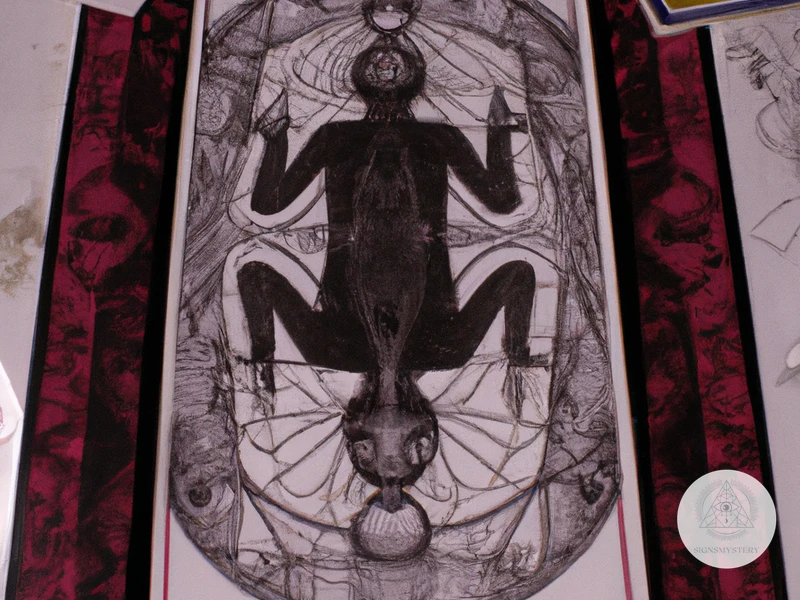
The mysterious and intriguing art of tarot card reading has fascinated humans for centuries, with its origins dating back to medieval Europe. However, beyond just being a tool for divination, tarot cards have been connected to deeper psychological practices as well. In particular, the practice of Jungian Shadow Work, which involves uncovering and integrating our unconscious desires and aspects of ourselves that we may have repressed or denied, has been linked to the interpretation of tarot cards. The intricate symbolism and archetypes depicted in the cards can guide individuals towards a greater understanding of their inner selves. Let’s delve deeper into this connection and discover how tarot cards can serve as a means of unlocking the mysteries of our own psyche.
The Major Arcana and its Relationship to the Self
When exploring the connection between Tarot cards and Jungian Shadow Work, it’s crucial to understand the significance of the Major Arcana and its relationship to the Self. The Major Arcana consists of 22 cards, each with its unique meaning and symbolism. These cards are often seen as the journey of the Self, and their archetypal nature can facilitate personal growth and transformation.
The Fool: The Fool is the first card in the Major Arcana and represents beginnings, spontaneity, and new opportunities. In shadow work, The Fool can represent taking risks and stepping out of one’s comfort zone to access hidden aspects of the Self.
The Magician: The Magician is a master of manifestation and represents the power of transformation. In shadow work, The Magician encourages us to tap into our inner resources to create the reality we desire.
The High Priestess: The High Priestess represents the subconscious, intuition, and the unknown. In shadow work, this card invites us to explore our hidden emotions, desires, and memories.
The Empress: The Empress represents abundance, creativity, and fertility. She encourages us to embrace our sensual nature and connect with our feminine energy.
The Emperor: The Emperor symbolizes authority, structure, and stability. He encourages us to take responsibility for our actions and establish a solid foundation for personal growth.
The Hierophant: The Hierophant represents tradition, religion, and spirituality. In shadow work, this card may encourage us to explore our beliefs and understand the role they play in shaping our lives.
The Lovers: The Lovers represent partnership, balance, and harmony. In shadow work, this card may encourage us to examine our relationships and strive for healthy connections with others.
The Chariot: The Chariot represents willpower, determination, and success. In shadow work, this card may encourage us to take control of our lives and move forward with confidence.
Justice: Justice represents fairness, balance, and impartiality. In shadow work, this card may encourage us to examine our actions and make amends for any wrongdoing.
The Hermit: The Hermit represents introspection, solitude, and wisdom. In shadow work, this card may encourage us to take time for self-reflection and connect with our inner guidance.
Wheel of Fortune: The Wheel of Fortune represents cycles, change, and destiny. In shadow work, this card may encourage us to understand the natural ebb and flow of life and embrace the changes that come.
Strength: Strength represents courage, inner fortitude, and self-control. In shadow work, this card may encourage us to face our fears and embrace our inner strength.
The Hanged Man: The Hanged Man represents self-surrender, sacrifice, and letting go. In shadow work, this card may encourage us to release our attachment to past patterns and embrace a new way of being.
Death: Death represents transformation, rebirth, and new beginnings. In shadow work, this card may encourage us to let go of old ways of being and embrace the opportunities for growth and renewal.
Temperance: Temperance represents moderation, balance, and harmony. In shadow work, this card may encourage us to find balance in all areas of our lives and practice self-care.
The Devil: The Devil represents temptation, addiction, and materialism. In shadow work, this card may encourage us to examine our unhealthy patterns and release any attachments that no longer serve us.
The Tower: The Tower represents upheaval, change, and chaos. In shadow work, this card may encourage us to embrace change and trust in the transformative power of upheaval.
The Star: The Star represents hope, inspiration, and spiritual awakening. In shadow work, this card may encourage us to connect to our deepest desires and follow our soul’s path.
The Moon: The Moon represents the subconscious, dreams, and illusion. In shadow work, this card may encourage us to explore our deepest fears and release any limiting beliefs.
The Sun: The Sun represents energy, vitality, and success. In shadow work, this card may encourage us to embrace our inner light and shine brightly in the world.
Judgment: Judgment represents rebirth, transformation, and clarity. In shadow work, this card may encourage us to release any judgment towards ourselves and others and embrace forgiveness and compassion.
The World: The World represents completion, wholeness, and achievement. In shadow work, this card may encourage us to celebrate our accomplishments and embrace the feeling of fulfillment that comes with completing a journey.
The Minor Arcana and its Connection to Personal Development
The Minor Arcana of the tarot deck consists of four suits: wands, cups, swords, and pentacles. Each suit represents a different aspect of life, such as creativity, emotion, intellect, and material possessions.
Wands: The wands suit is associated with creativity, inspiration, and passion. It represents the fire element, which symbolizes transformation and growth. Drawing a wand card in a tarot reading can indicate a need to tap into your creative energy and pursue your passions in order to foster personal development.
Cups: The cups suit is connected to emotions, relationships, and intuition. It represents the water element, which symbolizes fluidity and adaptability. Drawing a cups card in a tarot reading can suggest a need to explore and understand your emotions in order to deepen your relationships and personal growth.
Swords: The swords suit is related to intellect, communication, and conflict. It represents the air element, which symbolizes mental clarity and insight. Drawing a swords card in a tarot reading may suggest a need to confront and address challenging situations in order to overcome obstacles and promote personal development.
Pentacles: The pentacles suit is associated with material possessions, wealth, and the physical world. It represents the earth element, which symbolizes stability and grounding. Drawing a pentacles card in a tarot reading can indicate a need to focus on practical matters, such as finances and career, in order to achieve personal growth and stability.
By exploring the meanings and messages of the Minor Arcana cards, individuals can gain a deeper understanding of their personal strengths, challenges, and potential for growth. Tarot readings can provide guidance and insight into these aspects of one’s life, allowing for reflection and exploration in the context of personal development.
How Tarot Readings can Support Shadow Work
Tarot readings are a powerful tool for supporting shadow work. Here are some ways in which tarot readings can help in this process:
- Bringing awareness to the shadow self: Tarot readings can highlight aspects of the shadow self that we may be unaware of, and bring them to our conscious awareness. The cards can reflect our internal struggles and conflicts, helping us to understand how our shadow self may beimpacting our thoughts, emotions, and actions.
Subscribe to Our Newsletter
Sign up to receive the latest news and updates.
- Providing guidance for exploring the shadow self: Tarot readings can guide us in exploring areas of the shadow self that we may be hesitant or resistant to uncover. The cards can provide insight into what is blocking us from fully understanding and integrating our shadow self, and offer suggestions for how to move forward in the process.
- Serving as a mirror for our experiences: The cards in a tarot reading can reflect back to us our own experiences, and help us to see them more clearly. By providing an objective perspective on our situation, tarot readings can help us to understand our unique challenges, strengths, and weaknesses.
- Encouraging self-reflection: Tarot readings can encourage us to engage in self-reflection and introspection. By prompting us to consider questions and themes related to the shadow self, tarot cards can help us to gain greater clarity and insight into our inner world.
By using tarot readings as a support for shadow work, we can gain valuable insights into our unconscious patterns and behaviors, and work towards greater self-awareness and personal growth.
How to Use Tarot Cards for Personal Transformation
As we have discussed earlier, Tarot cards have deep connections with Jungian Shadow Work and can be powerful tools for personal transformation. If you’re new to Tarot, it might seem overwhelming to start using them for this purpose. However, with the right approach and a willingness to explore, anyone can use Tarot for personal growth and self-discovery. In this section, we’ll explore some practical tips and techniques for using Tarot cards to support your journey of personal transformation. From choosing the right deck to connecting with the cards through meditation and reflection, we’ll guide you through the process of tapping into the power of Tarot for your own personal journey of transformation.
Choosing the Right Tarot Deck
When it comes to tarot cards, choosing the right deck is crucial for a successful practice. With so many options available, it can be overwhelming to know where to start. Here are some important factors to consider when selecting your tarot deck:
| Factor | Considerations |
|---|---|
| Art Style | There are a variety of art styles used in tarot decks, including traditional, modern, and fantasy. Consider which style resonates with you and your personal aesthetics. |
| Symbolism | Each tarot deck has its own symbolism, from the images on the cards to the colors used. Look for a deck that speaks to you on a symbolic level and aligns with your beliefs and interests. |
| Intuition vs. Tradition | Some tarot decks follow traditional symbolism and interpretations, while others leave room for intuition and personal interpretation. Decide whether you prefer a deck that adheres to traditional meanings or one that allows for more flexibility. |
| Size | Tarot decks come in various sizes, from mini to standard to oversized. Consider which size will be most comfortable and practical for you to handle and shuffle. |
| Accessibility | Some tarot decks are more widely available than others, and some may be out of print or harder to find. Consider how easily accessible the deck is for you and whether you’re willing to make the effort to acquire it. |
Remember that ultimately, the best tarot deck for you is one that speaks to you on a personal level and helps you connect with your intuition and inner wisdom. Don’t be afraid to explore various decks and trust your instincts when making your selection.
The Importance of Setting Intentions
Setting intentions is an essential part of using tarot cards for personal transformation. By setting clear intentions, you direct your energy and attention to specific areas of your life where you want to create change or gain deeper understanding. Here are some key points that highlight the importance of setting intentions:
- Focus: Setting intentions helps you focus on what you want rather than what you don’t want. When you focus on positive outcomes, you attract positive energy and opportunities.
- Clarity: Clear intentions help you gain clarity about what you need to work on, what you want to achieve, and how you want to feel.
- Motivation: When you have a clear intention, you are more motivated to take action towards your desired outcome.
- Empowerment: Setting intentions empowers you to take control of your life and make positive changes.
- Alignment: When your intentions align with your deeper values and purpose, you create a sense of alignment and fulfillment in your life.
It is important to take the time to reflect on your intentions before using tarot cards. This can be done through journaling, meditation, or simply taking a few moments to quiet your mind and focus on your goals. Your intentions should be specific, positive, and focused on what you want to achieve. Avoid setting intentions based on fear or negative emotions, as this can block your progress.
As you work with tarot cards and set intentions, remember to remain open to the messages and guidance that come through. Trust the process and allow yourself to be guided towards your desired outcomes. By setting clear intentions and working with tarot cards, you can transform your life and create positive changes in all areas of your life.
Connecting with Tarot Cards through Meditation and Visualization
One effective way to connect with tarot cards is through the practice of meditation and visualization. This method can help you access your intuition and gain deeper insights into your psyche. Here are some steps to get started with connecting to tarot cards through meditation and visualization:
- Find a quiet and comfortable space: Start by finding a place where you can be alone and undisturbed. Sit or lie down in a comfortable position.
- Choose a tarot card: Select a card from the deck that you feel particularly drawn to or that relates to a specific issue you are currently experiencing. Hold the card in your hands and take a few deep breaths to center yourself.
- Close your eyes: Close your eyes and focus on your breath. Allow yourself to relax and let go of any tension or stress you may be feeling.
- Visualize the card: Begin to visualize the card in your mind’s eye. See the colors, images, and symbols on the card as vividly as you can.
- Enter the card: Imagine yourself entering into the card and becoming a part of the scene. Use all of your senses to make the experience as real as possible.
- Explore the card: Allow yourself to explore the card in this visualized state. Ask yourself questions, notice any emotions that come up, and pay attention to any messages or insights that arise.
- End the visualization: When you’re ready, slowly come back to your physical body. Take a few deep breaths and open your eyes. Jot down any notes or insights that came up during the visualization.
By using this technique, you can create a deeper connection with tarot cards and develop a stronger understanding of yourself and your subconscious. With each visualization, you may discover new insights and deeper layers of meaning within the cards. Experiment with different cards and visualization techniques to find what works best for you.
Journaling and Reflection with Tarot Cards
One powerful way to use tarot cards for personal transformation is through journaling and reflection. This practice involves pulling a tarot card and using it as a prompt for journaling about your thoughts and feelings, as well as reflecting on how the card relates to your current situation.
| Step | Description |
|---|---|
| 1 | Shuffle the tarot deck and choose one card that resonates with you or your current situation. |
| 2 | Take some time to study the image on the card and the traditional meanings associated with it. |
| 3 | Write about your initial reactions to the card. What emotions or thoughts come up for you? |
| 4 | Reflect on how the card relates to your life or current situation. Are there any parallels or insights you can draw? |
| 5 | Consider any action steps you can take based on the card’s message. What changes or shifts can you make in your life? |
| 6 | Repeat this process regularly, pulling a new card and journaling about its message as a way to deepen your understanding of your own psyche and get clearer insights into your life. |
Journaling and reflection with tarot cards can be a powerful tool for self-discovery and personal growth. By tapping into the archetypal energies and symbolism of the cards, you can gain new perspectives on your own inner world and the challenges and opportunities that you face. Over time, this practice can help to deepen your relationship with your own intuition and inner guidance, as well as provide valuable insights and guidance on your journey of self-discovery.
Conclusion
As we have explored in this article, Jungian shadow work is a powerful tool for personal transformation and achieving a greater sense of self-awareness. By shining light on the unconscious parts of ourselves, we are able to integrate them and become more whole.
Tarot cards can be a valuable tool in this process, as they provide a visual representation of the archetypes and symbols within our psyche. By working with the cards, we are able to connect with our intuition and gain deeper insights into our inner world.
The major arcana of the tarot represents the journey of the self, while the minor arcana offers guidance for personal growth and development. Through tarot readings and self-reflection, we can uncover the parts of ourselves that we have been suppressing or ignoring.
However, it is important to approach tarot cards and shadow work with intention and mindfulness. Choosing the right tarot deck and setting clear intentions before a reading can enhance the experience and provide greater clarity. Meditation and visualization can also help us connect with the cards on a deeper level.
Journaling and reflection are important practices to integrate after a tarot reading as well. By recording our thoughts and emotions, we can track our progress and gain deeper insights into our personal transformation.
Overall, the connection between tarot cards and Jungian shadow work provides a powerful path for personal growth and self-discovery. By embracing the unknown parts of ourselves, we can become more whole and live a more fulfilling life.
Frequently Asked Questions
What is the difference between the Major Arcana and the Minor Arcana in Tarot?
The Major Arcana in Tarot represents the major themes and archetypes in our lives, while the Minor Arcana focuses on more specific situations and events.
Can Tarot Cards predict the future?
Tarot Cards do not predict the future with absolute certainty, but they can offer insight and guidance on potential outcomes based on current situations and energies.
Do you need to have psychic abilities to read Tarot Cards?
No, you do not need to have psychic abilities to read Tarot Cards. Anyone can learn to read them with practice and study.
What are some common Tarot spreads?
Some common Tarot spreads include the Celtic Cross, the Three-Card Spread, and the Horseshoe Spread.
What should I do if I get a negative Tarot reading?
A negative Tarot reading can be a difficult experience, but it is important to remember that it is only one possible outcome. Use the reading as an opportunity to reflect on your current situation and consider making changes if necessary.
Can Tarot Cards be used for mental health therapy?
Yes, Tarot Cards can be used as a tool in mental health therapy to help clients explore their emotions and gain insight into their thoughts and behaviors.
Why is journaling important in Tarot Card readings?
Journaling can help you reflect on your Tarot Card readings and gain a deeper understanding of the messages they offer. It can also help you track your progress and growth over time.
How do I choose the right Tarot deck?
Choosing the right Tarot deck is a matter of personal preference. Consider the style of the artwork, the symbolism used in the cards, and the intended purpose of the deck.
What types of questions are appropriate to ask during a Tarot Card reading?
Appropriate questions for a Tarot Card reading are those that focus on your personal growth and development, rather than predicting specific outcomes or events.
Can Tarot Cards be used for spiritual growth?
Yes, Tarot Cards can be used as a tool for spiritual growth and self-discovery. They can help you connect with your intuition and gain a deeper understanding of yourself and the world around you.



